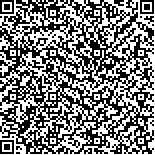| 摘要: |
| 当前,对社区更新仅仅停留在物质空间
维度的批判日益增多,强调对社会经济层面的关
注。作为对其的回应,本文依据社会资本理论,
首先构建了单位社区更新前后个体社会资本变
化的分析框架;然后采用混合研究的方法选取
T市B社区为研究对象对其进行验证。主成分分
析结果表明,个体社会资本受单位社区更新影
响且总体呈下降趋势。文章进而通过定性研究
分析单位社区更新对个体社会资本的差异化影
响机制。研究发现,居民个体社会资本受影响
强度最大,社区工作人员次之,租客最小;建成
环境及其引发的社区感知的变化是导致个体社
会资本变化的主要原因,而社会网络与社会互动
的变化对同一单位社区内不同人群个体社会资
本的差异化影响具有显著解释意义。 |
| 关键词: 社区更新 个体社会资本 单位制 影响机制 混合研究 |
| DOI:10.13791/j.cnki.hsfwest.20240104 |
| 分类号: |
| 基金项目:国家自然科学基金面上项目(72274197) |
|
| The impact of the Danwei Community renewal on individual social capital: A case studyof B Community in City T |
|
LI Yue,LI Xuewei
|
| Abstract: |
| Community renewal, as small-scale urban revitalization tightly intertwined with
residents’ daily lives, constitutes a vital task in the process of new urbanization. In response to
the increasing critique of community renewal only focus on the dimension of physical space,
emphasizing the attention to the socio-economic dimension, based on theories of social capital,
this paper selected the Danwei community B in City T as the research object, and firstly conducted
the dynamic analytical framework of individual social capital changes before and after the renewal
of Danwei community. Subsequently, a mixed-methods approach, which integrating quantitative
and qualitative research methods, was applied to community B for verification. The quantitative
results show that individual social capital is affected by community renewal and shows an overall
downward trend. And the residents are the most strongly affected, followed by community staff and
tenants. Through qualitative analysis, this study identified mechanisms of differential impact of
community renewal on individual social capital. For residents, the dissolution of the public space
that carries life memories is followed by the gradual decline of social network and social interaction.
Therefore, residents did not effectively improve their satisfaction through community renewal, but
rather reduced their satisfaction and sense of security to varying degrees due to the “loss” of the
original neighborhood relationships and social interactions. From the perspective of tenants, who are
essentially separated from the community residents, their social interactions with community staff
are relatively weak but stable, overall, tenants have a relatively low stock of social capital, and the
renewal had no substantial impact on their social networks and interactions. In terms of community
staff, the built environment of a community is both a living environment and work environment, and
renewal not only brings about a significant increase in population size and heterogeneity, but also
increases the population mobility, leading to a more complex living environment and increasing the
difficulty of community governance. Nevertheless, due to the embedded nature of social networks
within community organizations, the social connections of community staff remain closed and
maintain relatively stable relationships, making them less affected by community renewal.
Comparative analysis of the mechanisms influencing the social capital of individuals from
different social groups in the community shows that the change of built environment is a direct
influence factor. Among them, residents’ individual social capital is mainly affected by the internal
built environment of the community, while tenants and community staff are more concerned with
changes in the external built environment, thus, the built environment is a common cause of the
Danwei community renewal affecting individual social capital. Then, community perception is the
most powerful factor to explain the change of individual social capital. The community perception
of residents, tenants and community staff are all affected by community renewal, but the impact
on residents is the strongest. Social networks and social interaction are the key factors that lead to
differentiated impact on individual social capita. At last, the degree of attention of different groups
to different explanatory factors before and after the renewal of community B largely depends on the possession of a certain stock of individual social capital before the renewal. This suggests that social capital is not permanent, fixed, and is prone to change
with the community environment. It is imperative to pay special attention to the impact of built environment changes on individual social capital during the
Danwei community renewal.
Several implications are provided to the Danwei community renewal. Firstly, the built environment and the shifts in community perception induced
by the renewal process serves as the primary drivers of changes in individual social capital. Therefore, the renewal of the Danwei community in China
needs to break the limitation of the previous focus on the renewal of physical space and begins to focus on the impact of the change of built environment on
individual social capital. Second, based on the micro-individual perspective, the changes of social network and social interaction have significant explanatory
significance on the differentiated impact of individual social capital of different groups in one community, which also implies that the renewal of the Danwei
community is not only a physical transformation of community space. Rather, it is also the reconstruction of social networks, involving multiple stakeholders
and various types of relationships. Focusing on the relative changes in physical space and social space during the Danwei community renewal process is a
crucial breakthrough for effectively avoiding social conflicts. |
| Key words: community renewal individual social capital danwei system influence mechanism mixed research |


